 
Load-Liner Series Rear Loader
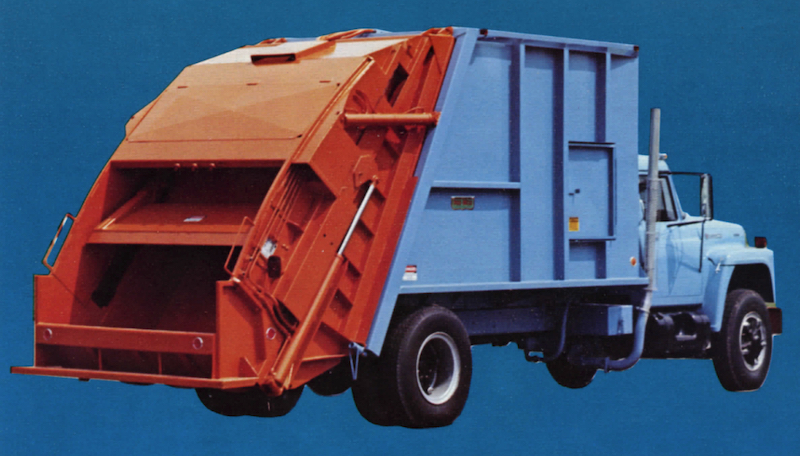
Pak-Mor Load-Liner RL-200 Series
Beginning in 1968, Pak-Mor launched an all-new line of rear loaders, called Load-Liner, which were once again the creation of Orin Anderson. With this new series, Pak-Mor became the third major manufacturer to utilize the twin-panel 'slide-sweep' method on a rear loader, following the Leach 2-R Packmaster (1959) and Load-Master LM100 (1964). By the end of the 1960s, it was probably becoming apparent to most everyone in the industry that the slide-sweep method represented the future of rear loader technology, and would make almost all previous designs obsolete.
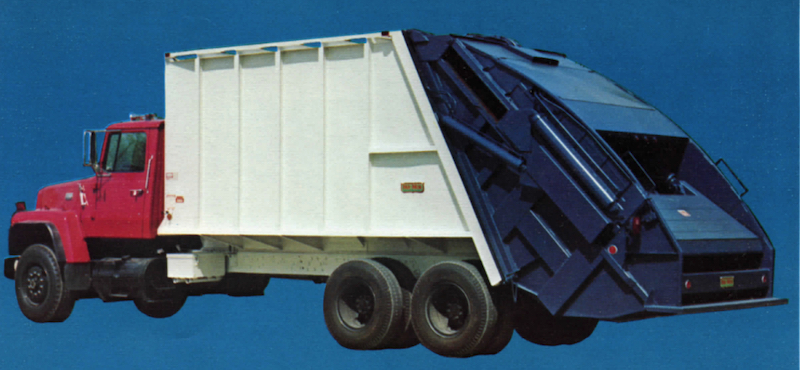
Pak-Mor Load-Liner RL-300 Series
Pak-Mor had evidently seen this trend, and the all new RL-300 series (with 3 cubic yard loading hopper) debuted just four years after the introduction of their rotary-sweep RL-15 Profit Maker series. The RL-200 (2 cubic yard hopper) followed shortly thereafter, giving Pak-Mor a full line up of rear loaders. The RL-15 became the entry-level model for residential & light duty. The RL-200/300 Load-Liners filled out the top slots respectively as the medium and heavy-duty bulk packers.
The RL-300 borrowed heavily from the Load-Master LM100, with external packer cylinders mounted on the hopper side walls. However, Pak-Mor used slide blocks to carry the slide panel (in lieu of the rollers used by Leach and Load-Master). The high-compaction RL-300 was a real brute, with massive 6" packing cylinders which exerted 65,000 lbs. of force, working at 1150 p.s.i. fluid pressure. An angled sweep panel gave the 300 a big bite, very similar to the Load-Master. Three bodies could be had; 20, 25 or 30 yards capacity.
The mid-range RL-200 featured a slightly smaller, two-plus yard hopper and a smaller 4" packer cylinders. Five bodies were available for the 200 series, in 14-16-18-20-25 cubic yard capacities (a 30 yarder would eventually be offered in the future). This version would go on to become one of Pak-Mor's most popular models over the years, a favorite of municipalities and contractors alike, with rated hopper capacity eventually reaching 2.8 cubic yards. The RL-200 also and had another interesting feature;
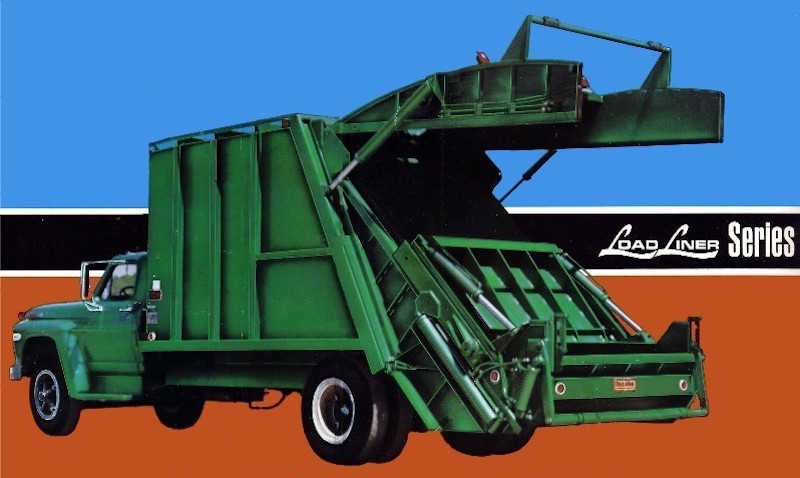
By removing a few fasteners, the upper tailgate section could be raised hydraulically to allow easy access to all major panel and hydraulic components. The RL-200 packer cylinders were located below the plane of the blade track, and the tailgate lift cylinders were also repositioned to facilitate this service feature. This was a Pak-Mor exclusive, not offered by any other U.S. manufacturer.
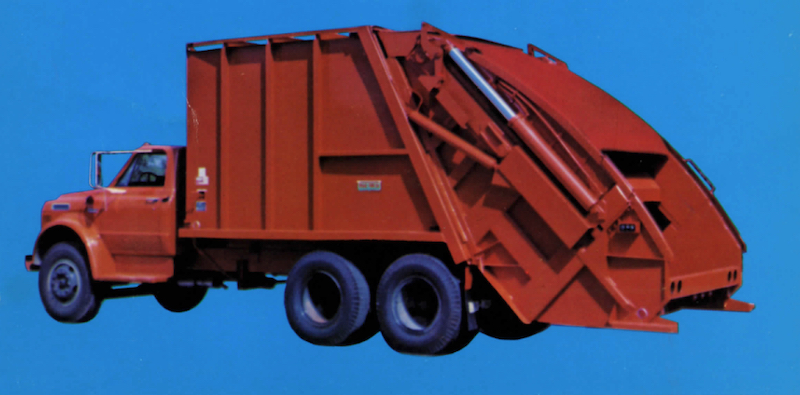
RL-320, smallest of the 300-series line

Load-Liners could be fitted with either kick-bar or line-pull container hoists
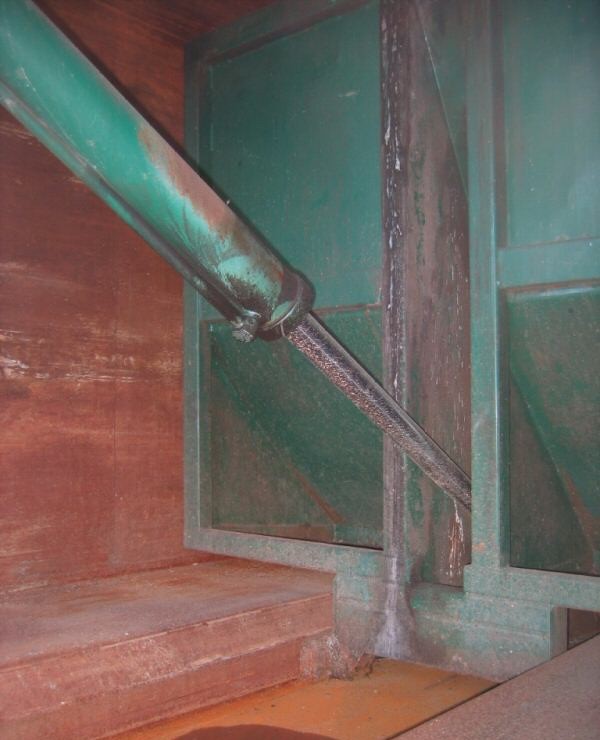
Load-Liners mounted the ejector ram at an angle from the upper front end of the body. This allowed for a single-stage ram to be used in bodies of 20 cubic yards or less. This greatly reduces initial unit cost, as well as maintenance expenses over the life of the packer.
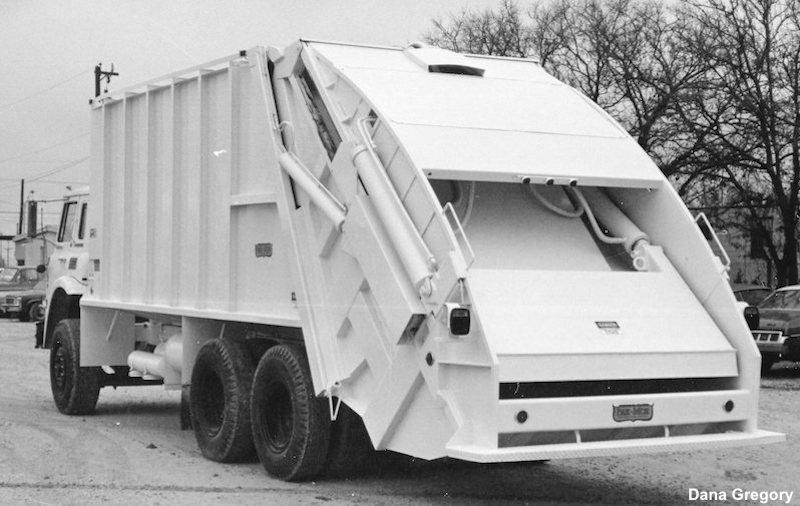
Grand-Daddy of the Pak-Mor line was the big RL-330 high-compaction rear loader
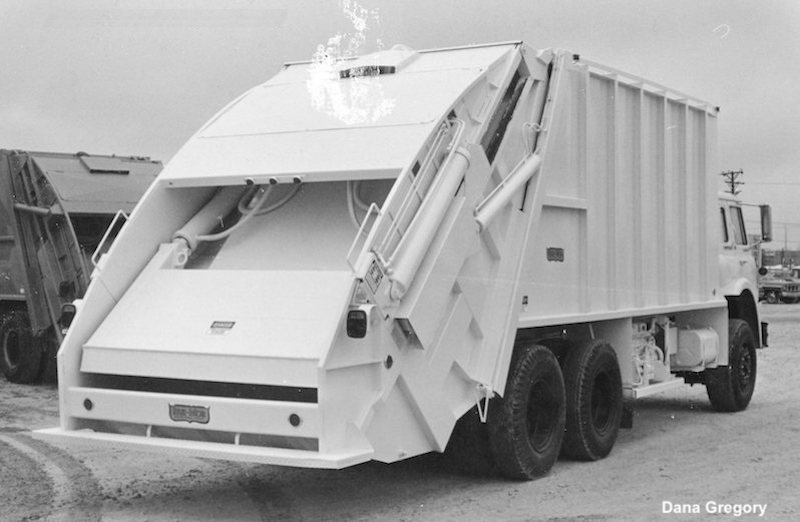
This 1970s RL-330 is fitted with an auxiliary engine to drive the pump for pack-on-the-go versatility
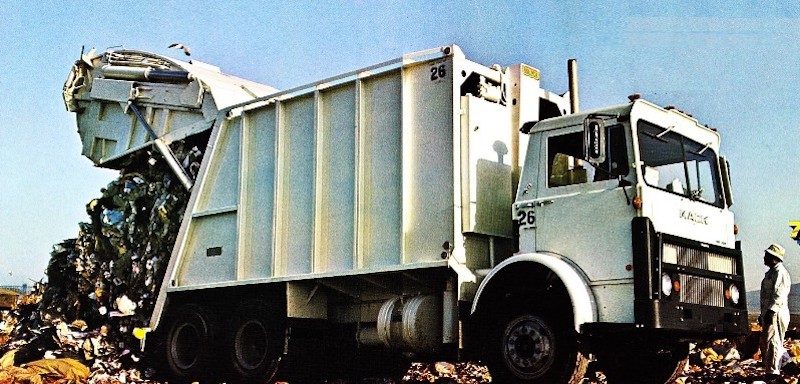
Big '76 RL-325 discharging load at the landfill
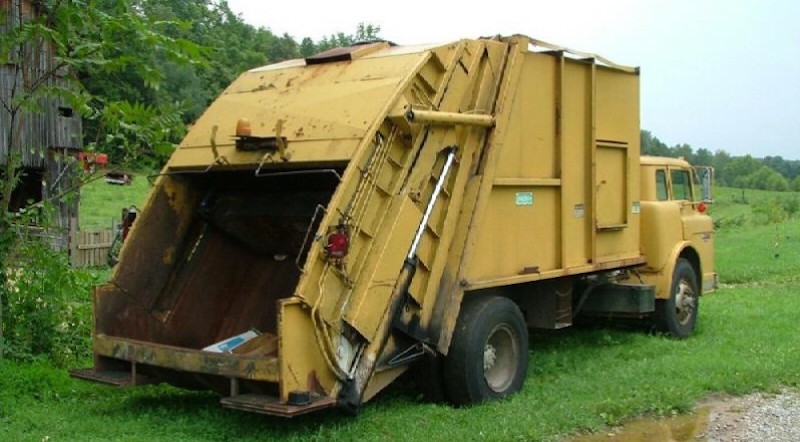
Later model R218 from 1982, still has rounded lines on tailgate. The back ends of all models were squared off during the 1980s
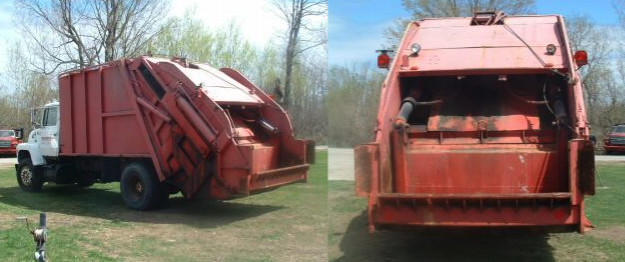
1984 RL-320, last of the 300-series with the slide cylinders mounted above the tracks
|
100 Series Load-Liner
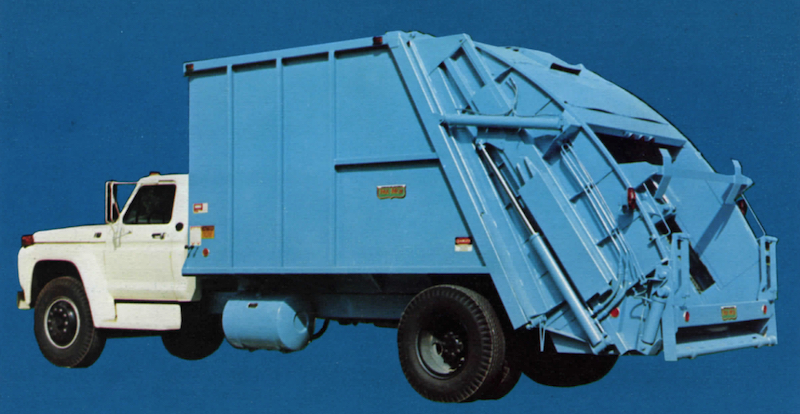
The RL-100 Load-Liner was introduced in 1969, and by the mid-1970s had replaced the original rotary-blade RL-15 series. This new model was essentially a scaled-down version of the larger Load-Liners, and become the entry-level, light duty rear loader of the product line. The smallest model was initially a 14 yarder, but the 100 series has at times been offered with any size Pak-Mor rear loader body, right up to the big 30 yard box.
The 100/200/300 series continues to this day, though gradually they became known as simply the "R" series instead of "RL". During the 1980s, different combinations of letters would often follow the "R" to denote model variations, such as "RHC200" for a high-compaction version of the 200 series. A narrower and shorter bodied RNC100 series was developed for use in alleys and other confined areas.
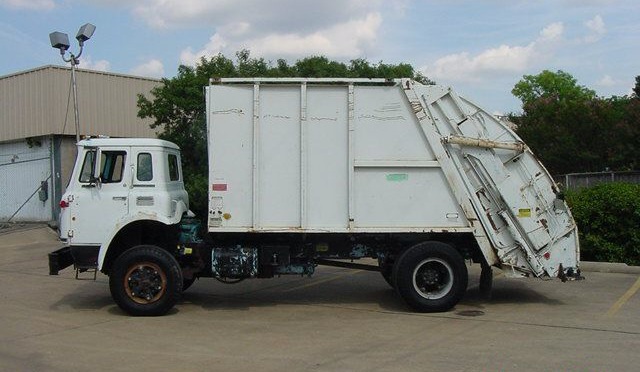
1981 model R118 on an International Harvester Cargostar cabover
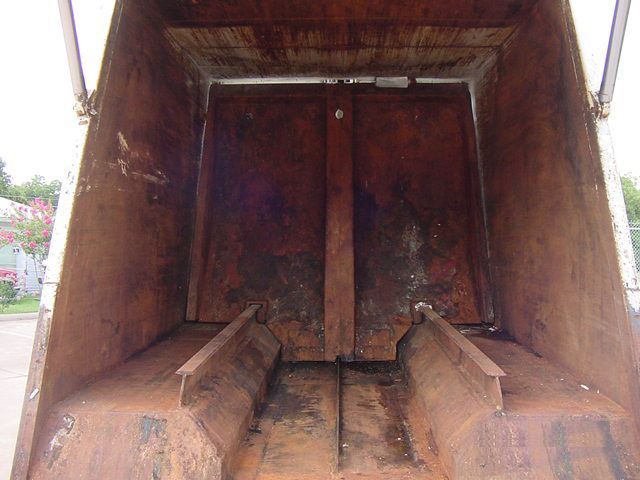
Inside view of the R118
SELECTED PATENTS
|
Patent # |
Description |
Inventor |
Assignee |
Date |
|
US3615029 |
Rear Loading Refuse Vehicle |
Anderson |
Pak-Mor |
March 21, 1969 |



4/5/09 (updated 6/5/22)
© 2009
All Rights Reserved
Photos from factory brochures/advertisements except as noted
Logos shown are the trademarks of respective manufacturers
|
|
| 












